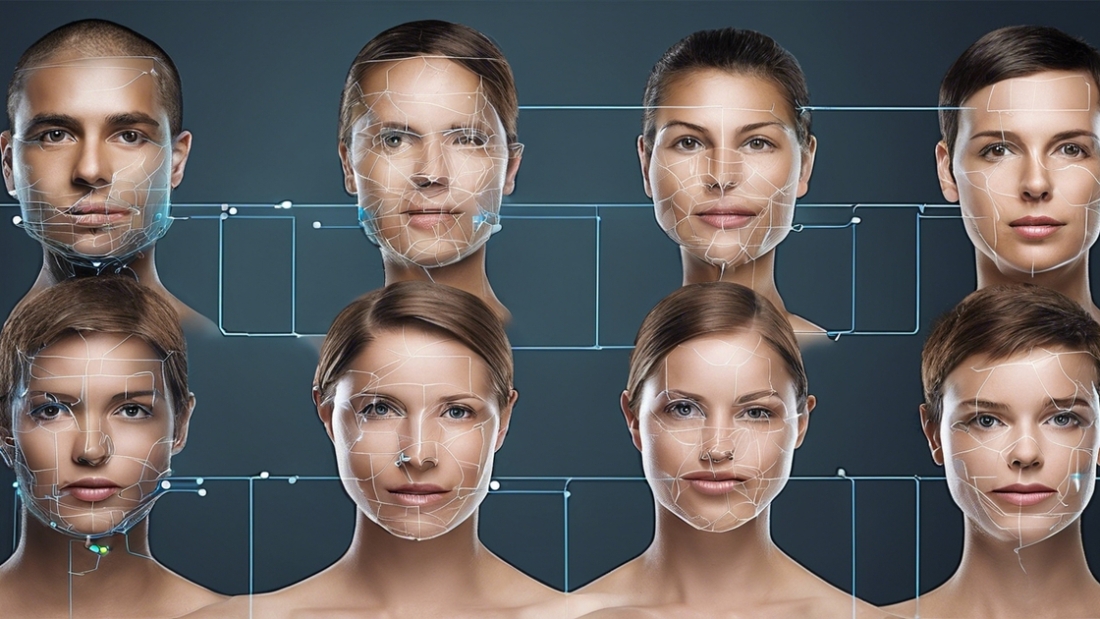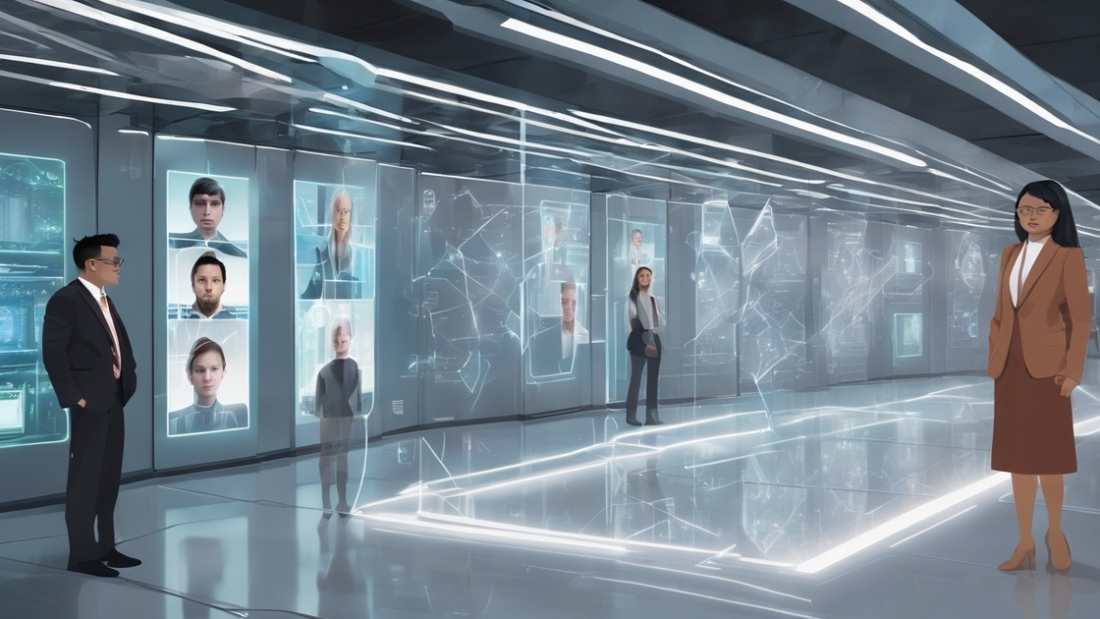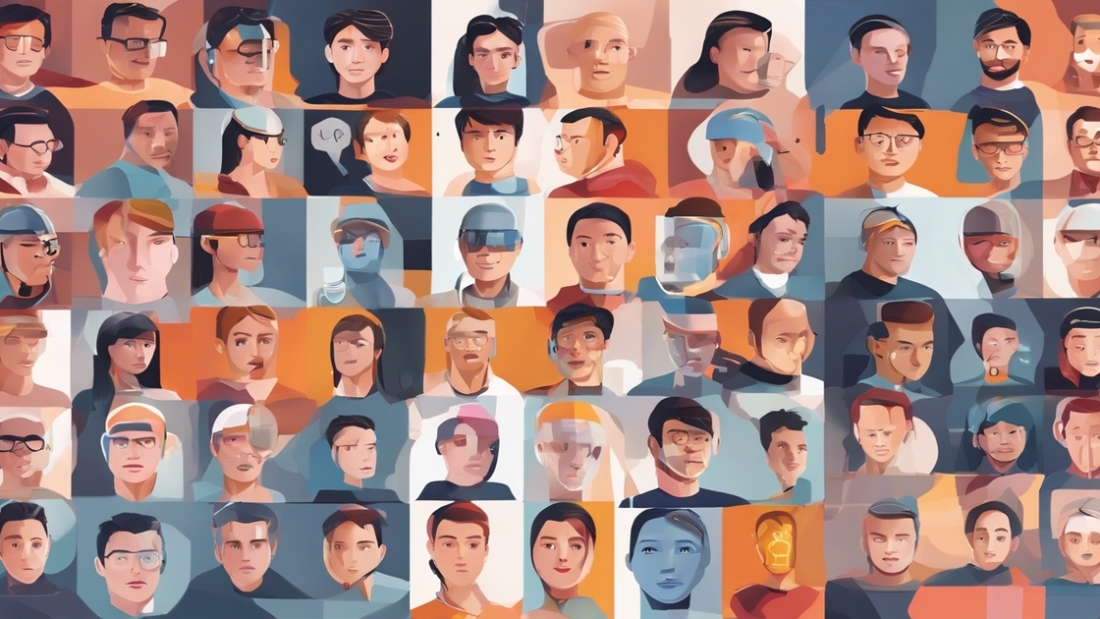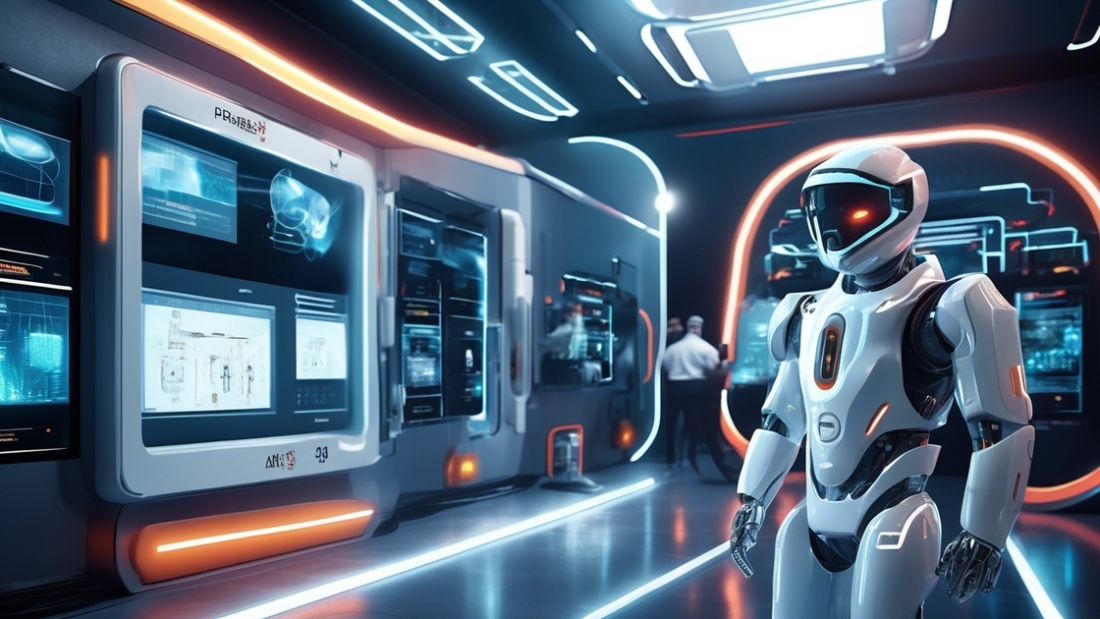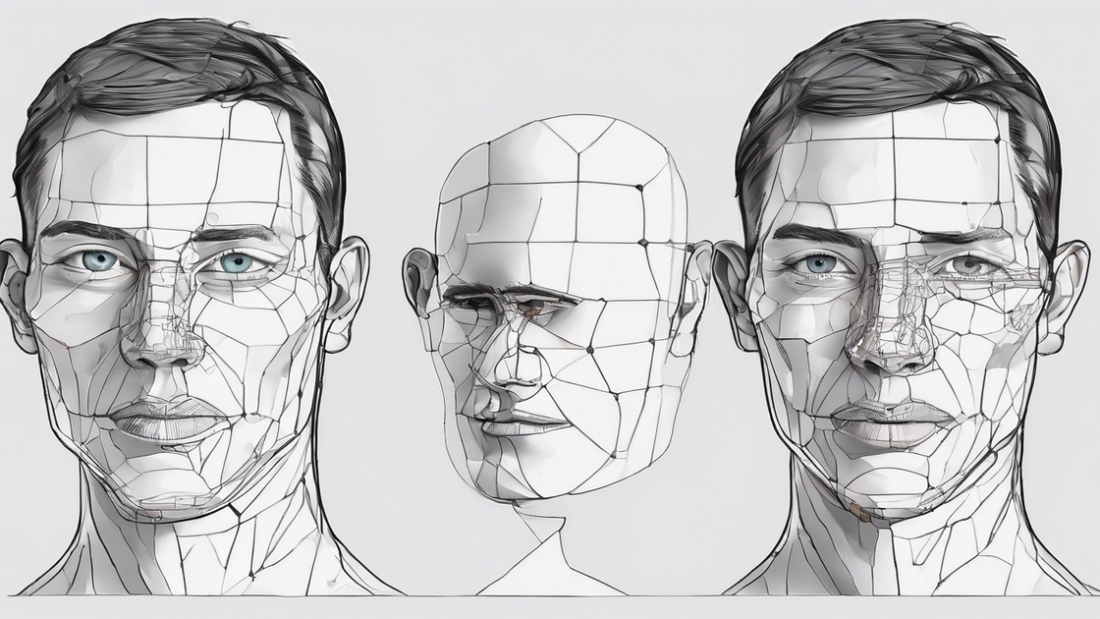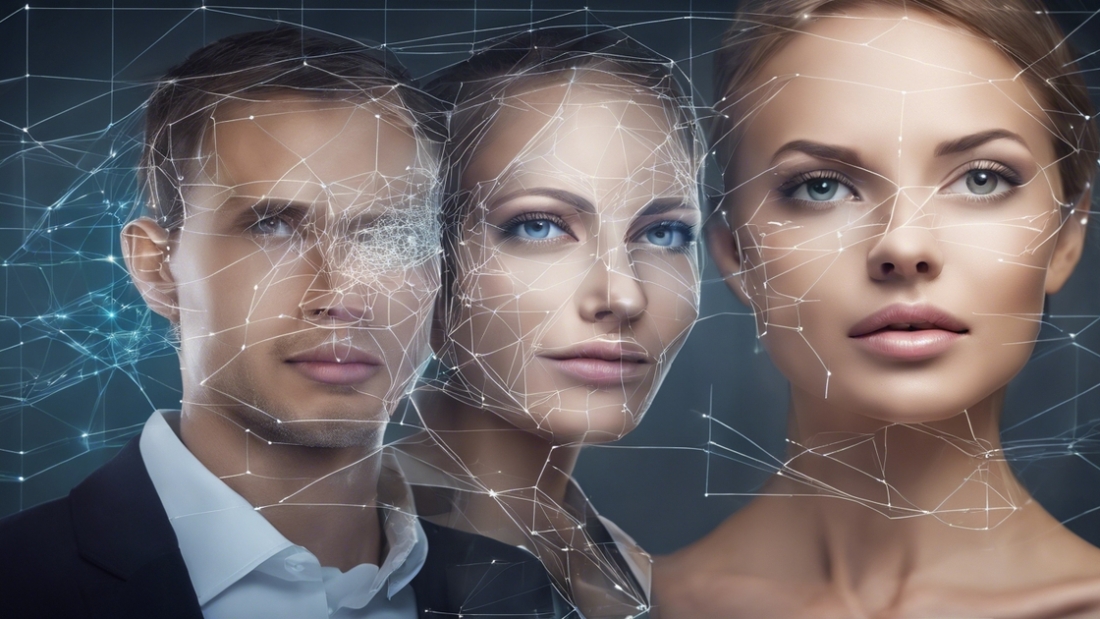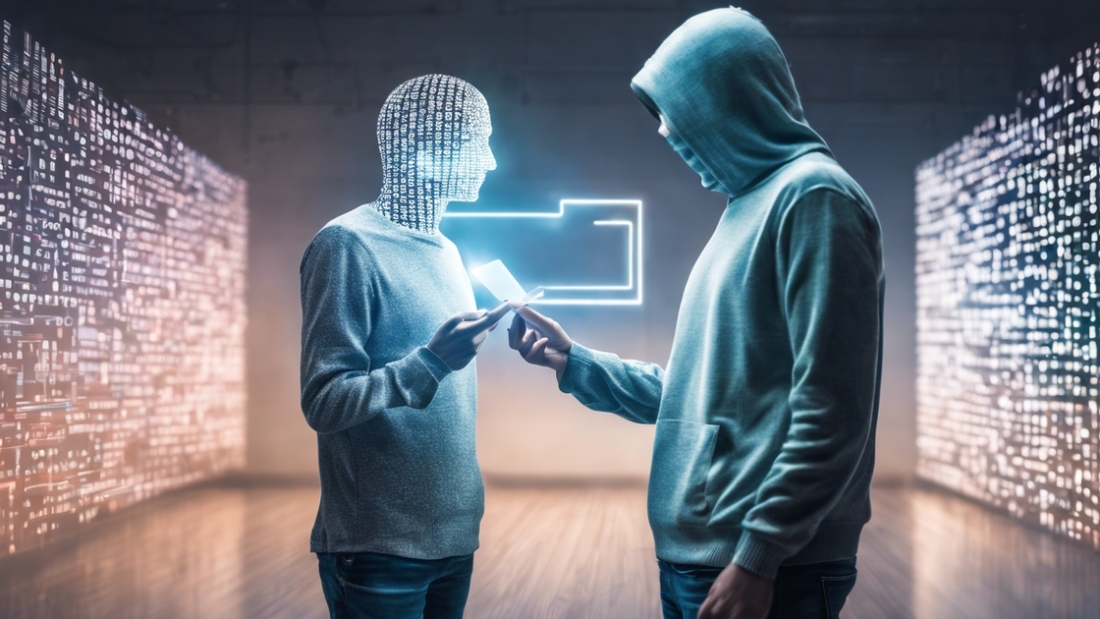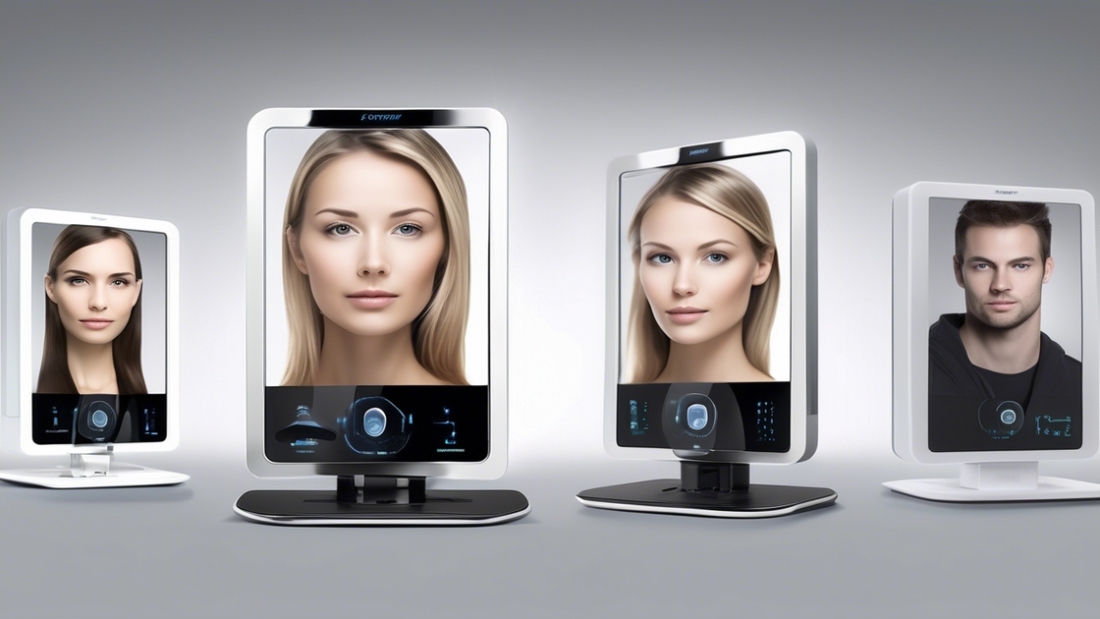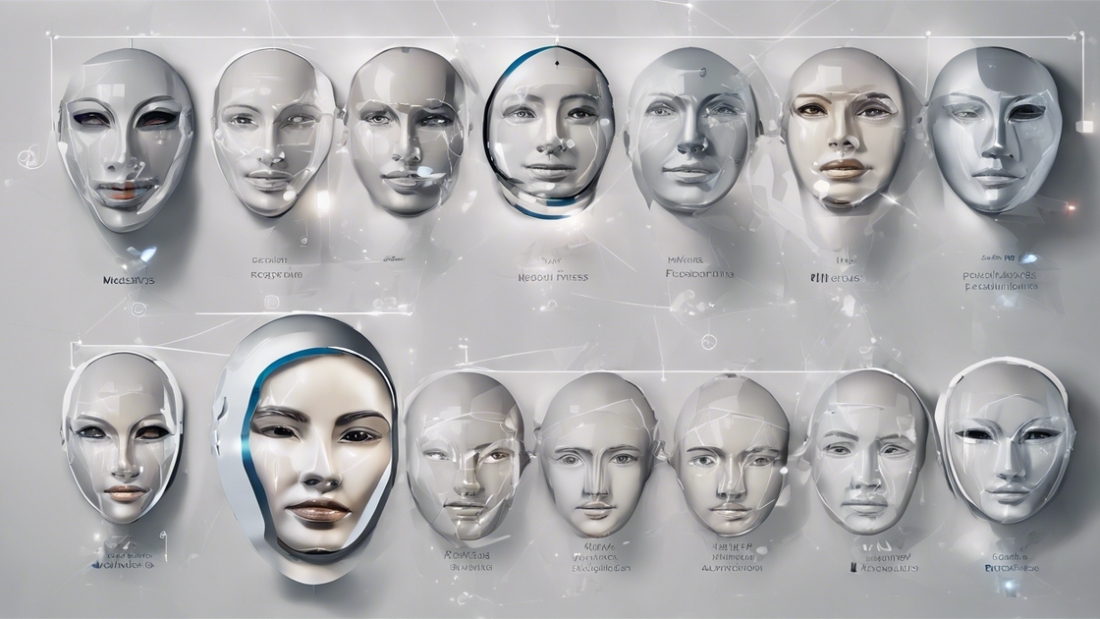Did you know that by 2024, the global face recognition market is projected to reach a staggering value of $12.92 billion? Face recognition technology has rapidly evolved, revolutionizing security systems, unlocking smartphones, and enhancing user experiences. This innovative technology analyzes unique facial features for identification and authentication, offering convenience and heightened security across various industries.
Face recognition’s applications span from law enforcement and banking to retail and healthcare, streamlining processes and safeguarding sensitive information. As this technology continues to advance, its potential for improving efficiency and security is limitless. Stay tuned as we delve deeper into the fascinating world of face recognition technology in this insightful blog post.
Key Takeaways
- Understand the purpose and goals of the Face Recognition Vendor Test (FRVT) to gauge the effectiveness and accuracy of face recognition technologies.
- Evaluate face recognition systems based on standardized methodologies to ensure consistency and reliability in performance metrics.
- Stay informed about industry benchmarks and metrics to compare and improve the efficiency of face recognition solutions.
- Embrace face recognition technology’s impact on tech development by exploring its applications in various sectors for enhanced security and convenience.
- Adopt best practices in face recognition implementation to maximize its benefits while prioritizing privacy and data protection.
- Address bias and fairness concerns in face recognition algorithms by promoting transparency, accountability, and diversity in dataset collection and model training processes.
FRVT Purpose and Goals
Evaluation
Face Recognition Vendor Test (FRVT) serves to evaluate the performance of face recognition algorithms. It is conducted by the National Institute of Standards and Technology (NIST).
FRVT conducts systematic evaluations to assess the accuracy, speed, and efficiency of various face recognition systems. These evaluations are crucial in determining the effectiveness of different algorithms.
Advancements
The specific goals of FRVT include driving advancements in face recognition technology. By subjecting algorithms to rigorous testing and benchmarking, FRVT aims to push the boundaries of innovation in this field.
FRVT plays a pivotal role in fostering competition among developers and researchers. This healthy competition fosters creativity and fuels the development of more robust and reliable face recognition systems.
FRVT Evaluation Methodology
Key Metrics
Face Recognition Vendor Test (FRVT) employs a rigorous evaluation methodology to assess the performance of face recognition algorithms. The evaluation process involves measuring key metrics such as accuracy, speed, and robustness.
FRVT assesses accuracy by analyzing the algorithm’s ability to correctly match faces against a large database. Speed is measured in terms of how quickly the algorithm can process and match faces, crucial for real-time applications. Robustness evaluates the algorithm’s performance under varying conditions such as different lighting, angles, and facial expressions.
Criteria Comparison
FRVT utilizes specific criteria to compare the performance of different face recognition systems. These criteria include false acceptance rate (FAR), false rejection rate (FRR), and identification accuracy.
The false acceptance rate measures the likelihood of the system incorrectly identifying an unauthorized individual as an authorized user. Conversely, the false rejection rate indicates the system’s probability of failing to identify an authorized user. Identification accuracy reflects the overall effectiveness of the system in correctly identifying individuals.
Standardized Evaluation Methodologies
Standardized evaluation methodologies are crucial in ensuring fair and unbiased assessments of face recognition technologies. By establishing consistent evaluation criteria and protocols, FRVT promotes transparency and reliability in benchmarking different algorithms.
The use of standardized methodologies enables comparability across various face recognition systems, facilitating informed decision-making for end-users and policymakers. Moreover, it enhances accountability among vendors to improve their algorithms based on objective performance evaluations.
Industry Benchmarks and Metrics
Key Benchmarks
Face recognition systems are evaluated based on industry benchmarks and metrics that determine their performance and reliability. False Acceptance Rate (FAR) and False Rejection Rate (FRR) are two crucial benchmarks used to assess the accuracy and security of these systems.
Importance of FAR and FRR
False Acceptance Rate (FAR) measures the likelihood of an unauthorized individual being incorrectly identified as an authorized user. On the other hand, False Rejection Rate (FRR) indicates the chances of a legitimate user being denied access.
Both FAR and FRR play a significant role in determining the effectiveness of face recognition algorithms. A low FAR ensures that only authorized individuals are granted access, enhancing security. Conversely, a low FRR minimizes inconvenience for legitimate users by reducing false rejections.
Continuous Improvement
Continuous improvement in industry benchmarks is essential for enhancing the overall quality of face recognition technology. By setting higher standards through improved benchmarks, developers are motivated to enhance algorithm accuracy and security features.
Moreover, advancements in benchmarking methodologies drive innovation in face recognition technology, leading to more robust and reliable systems. This continuous evolution ensures that face recognition technology remains at the forefront of security solutions.
Impact on Tech Development
Advancements in AI
Face recognition technology has significantly influenced the development of artificial intelligence (AI). By enabling machines to identify and analyze human faces accurately, AI systems have become more sophisticated. This has enhanced various AI applications, from personalized user experiences to advanced security measures.
The integration of face recognition into AI algorithms has revolutionized industries such as security, healthcare, and retail. In security, facial recognition systems provide enhanced authentication methods, ensuring secure access control. Healthcare benefits from accurate patient identification and personalized treatment plans based on individual facial features. Retail industries utilize face recognition for customer analytics, improving marketing strategies and enhancing the overall shopping experience.
Driving Digital Innovation
Face recognition’s impact extends beyond specific industries, driving overall technological progress and shaping the future of digital innovation. The ability to accurately recognize faces has opened doors to a wide range of applications, from automated attendance systems to emotion detection in human-computer interactions.
The continuous advancements in face recognition technology have led to the development of more efficient and reliable systems. These systems are now capable of recognizing faces in various lighting conditions, angles, and even with partial obstructions. Such advancements have propelled the integration of face recognition into everyday devices like smartphones, enhancing user convenience and security.
Role in Technological Progress
Face recognition plays a crucial role in shaping the trajectory of technological progress by serving as a fundamental building block for various applications. Its integration with other technologies like machine learning and computer vision has resulted in groundbreaking innovations that were once considered futuristic.
The accuracy and speed of face recognition algorithms have improved significantly over the years, making them indispensable tools in diverse fields. From law enforcement agencies using facial recognition for criminal investigations to healthcare providers utilizing it for patient identification, the technology continues to redefine how we interact with digital systems.
Adoption and Best Practices
Sectors
Face recognition systems have seen widespread adoption across various sectors, such as law enforcement, banking, and retail. In law enforcement, these systems are used for identifying suspects and enhancing public safety.
In the banking sector, face recognition technology is utilized for secure authentication processes during transactions. Retailers employ this technology for personalized shopping experiences and targeted marketing strategies.
Best Practices
When implementing face recognition technology, data privacy and security are paramount. It is crucial to obtain consent from individuals before capturing their facial data. Implementing encryption techniques can safeguard the stored data from unauthorized access.
To ensure ethical use, organizations must establish clear policies on how facial data will be collected, stored, and used. Regular audits and transparency in the system’s operations are essential to maintain trust with users.
Challenges and Strategies
One of the challenges associated with face recognition adoption is bias in algorithms, leading to inaccuracies in identifying individuals from diverse backgrounds. Organizations can address this by ensuring diverse training datasets to reduce bias.
Another challenge is security vulnerabilities, which can expose sensitive facial data to cyber threats. Implementing multi-factor authentication and regular security updates can mitigate these risks effectively.
Strategies for Integration
To successfully integrate face recognition systems, organizations should prioritize employee training to ensure proper usage and adherence to privacy guidelines. Regularly updating the system with the latest advancements in facial recognition technology is crucial for optimal performance.
Organizations should also collaborate with privacy experts and regulatory bodies to stay compliant with data protection laws. Conducting privacy impact assessments can help identify potential risks and ensure legal compliance.
Addressing Bias and Fairness
Ethical Considerations
Gender, race, and age play significant roles in the ethical considerations surrounding bias and fairness in face recognition algorithms. These technologies have been criticized for exhibiting biases that disproportionately impact certain demographic groups. For example, studies have shown that some algorithms are more accurate in identifying male faces compared to female faces, or they may struggle with accurately recognizing individuals from darker skin tones. Such biases raise concerns about the potential for discrimination and the perpetuation of societal inequalities.
Importance of Bias Mitigation
Addressing bias in face recognition systems is crucial to prevent discriminatory outcomes and promote inclusivity. Failure to address these biases can lead to serious consequences, such as misidentification, wrongful accusations, and the reinforcement of existing stereotypes. By ensuring that face recognition technology is fair and unbiased, we can create a more equitable society where individuals are treated justly regardless of their gender, race, or age.
Strategies for Fairness
To enhance accuracy and fairness in identification processes, various strategies and techniques can be employed to mitigate bias in face recognition technology. One approach involves diversifying training data to include a wide range of demographics, ensuring that the algorithms are exposed to a diverse set of faces during their development. Implementing bias detection tools can help identify and rectify any biases present in the system, allowing for continuous improvement and refinement.
Promoting Transparency
Transparency is key in ensuring that face recognition systems are held accountable for their decisions. By providing clear explanations of how these algorithms work and the factors influencing their outputs, users can better understand the limitations and potential biases inherent in the technology. Moreover, establishing ethics boards or oversight committees to evaluate the fairness of face recognition systems can provide an additional layer of scrutiny and ensure that ethical standards are upheld.
Global Influence and Policy
International Impact
Face recognition technology has sparked significant debates worldwide, influencing policies, regulations, and societal norms. Countries like the United States have faced challenges in balancing security needs with privacy concerns.
Diverse Approaches
Governments globally have adopted varying strategies to regulate facial recognition. For instance, the European Union emphasizes data protection, while countries like China prioritize surveillance capabilities.
Implications of Collaboration
International collaborations and standards play a crucial role in shaping the future of face recognition. The International Standards Organization (ISO) and Interpol work towards establishing guidelines for ethical use.
Pros:
- Enhances security measures
- Improves law enforcement efficiency
Cons:
- Raises privacy concerns
- Potential for misuse of data
Future Trends in Face Recognition
Advancements
Face recognition technology is rapidly advancing, with innovations such as 3D facial recognition and emotion detection becoming more prevalent. These advancements are enhancing the accuracy and efficiency of face recognition systems, paving the way for broader adoption across various industries.
The integration of artificial intelligence (AI) and machine learning algorithms is revolutionizing face recognition capabilities. AI-powered systems can now recognize faces in various lighting conditions, angles, and even with partial obstructions. This increased accuracy is crucial for security applications and user convenience.
Applications
In the future, face recognition technology is poised to revolutionize various sectors, including augmented reality (AR), smart cities, and personalized marketing. In AR, face recognition can enable more immersive experiences by overlaying digital information onto real-world scenes based on individuals’ identities.
Smart cities can leverage face recognition for enhanced security and efficient public services. For instance, law enforcement agencies can use the technology to identify suspects in real-time, while urban planners can analyze crowd movements for better traffic management.
Personalized marketing is another area where face recognition holds immense potential. Retailers can use facial recognition to offer tailored shopping experiences, such as personalized product recommendations based on customers’ demographics and preferences.
Challenges and Opportunities
Despite its promising future, face recognition technology also faces significant challenges. Privacy concerns are at the forefront, with debates surrounding data protection and surveillance implications. Striking a balance between innovation and privacy will be crucial for the ethical development of face recognition systems.
Moreover, bias and accuracy issues remain prevalent in face recognition algorithms. Ensuring fairness and eliminating biases in these systems is essential to prevent discriminatory outcomes, especially in law enforcement and hiring processes.
On the flip side, the opportunities presented by face recognition technology are vast. From enhancing security measures to streamlining customer experiences, the technology has the potential to reshape various aspects of society positively. Embracing these opportunities while addressing challenges will be key to maximizing the benefits of face recognition technology.
Final Remarks
As you’ve delved into the world of face recognition through the FRVT evaluation methodology, industry benchmarks, bias mitigation, and future trends, it’s evident that this technology’s impact is profound. Embracing best practices, addressing bias, and staying informed about global policies are crucial steps in harnessing the full potential of face recognition while ensuring its ethical and fair use.
Incorporating these insights into your tech endeavors can pave the way for responsible innovation and positive societal impacts. Stay vigilant about emerging trends, advocate for unbiased practices, and champion ethical guidelines in your utilization of face recognition technology. By doing so, you contribute to a more inclusive, secure, and advanced technological landscape. Keep exploring, learning, and applying these principles to shape a better future for all.
Frequently Asked Questions
What is the main purpose of FRVT?
FRVT aims to evaluate and advance face recognition technologies through standardized testing procedures to enhance accuracy, interoperability, and reliability in real-world applications.
How are industry benchmarks and metrics relevant to face recognition technology?
Industry benchmarks and metrics provide a standardized framework for measuring the performance of face recognition systems, facilitating comparisons between different solutions and driving advancements in accuracy and efficiency.
Why is addressing bias and fairness crucial in face recognition technology?
Addressing bias and fairness in face recognition technology is essential to ensure equitable outcomes for all individuals, prevent discrimination, and build trust in the technology’s reliability and ethical use.
What global influence and policy considerations impact the development of face recognition technology?
Global influence and policy decisions play a significant role in shaping the regulatory landscape for face recognition technology, influencing its deployment, data privacy protections, ethical considerations, and societal implications.
What are some future trends expected in the field of face recognition technology?
Future trends in face recognition technology include enhanced accuracy through AI advancements, increased emphasis on privacy protection mechanisms, wider adoption across industries, improved user experience, and continued efforts to address ethical concerns.
